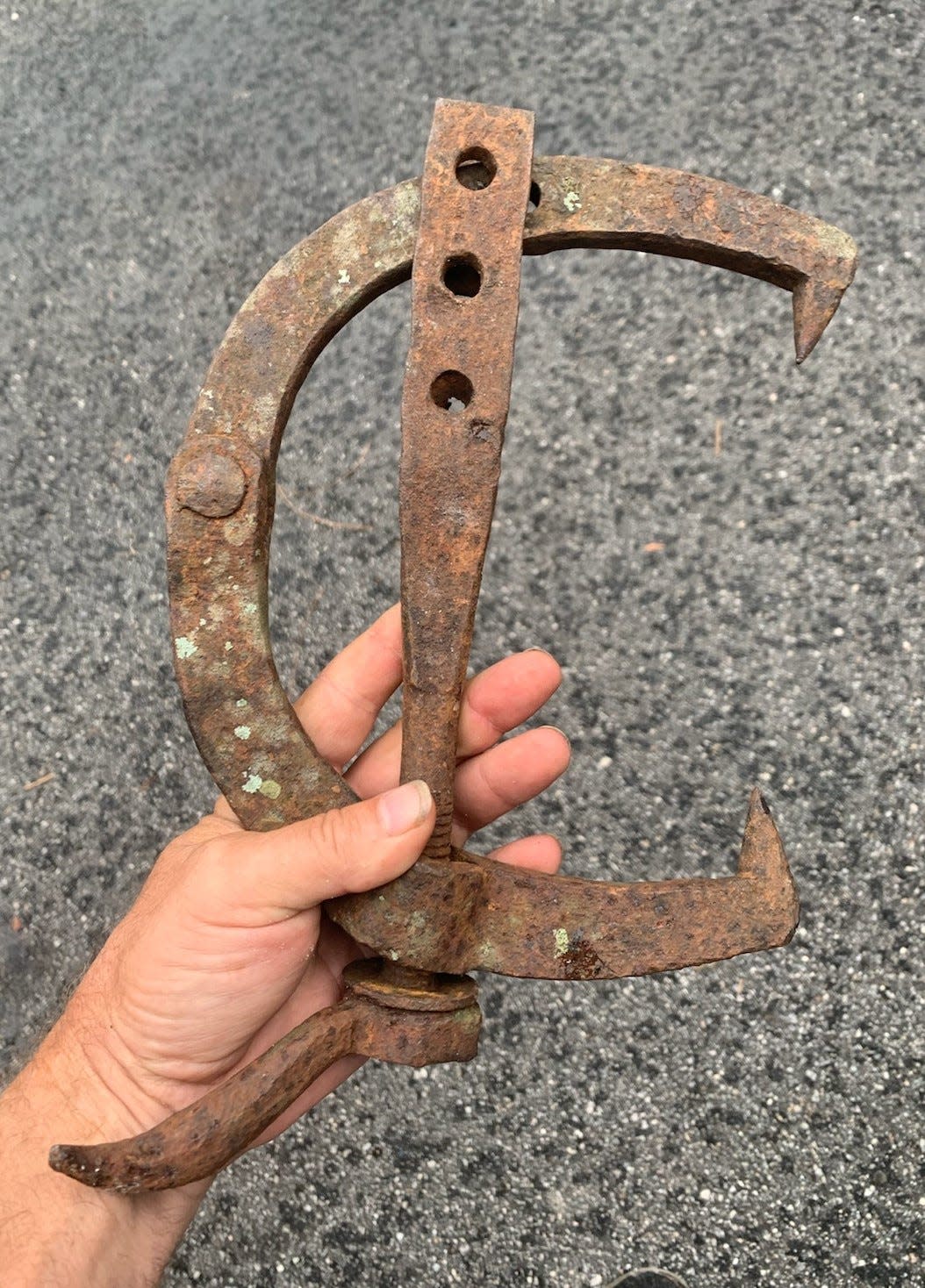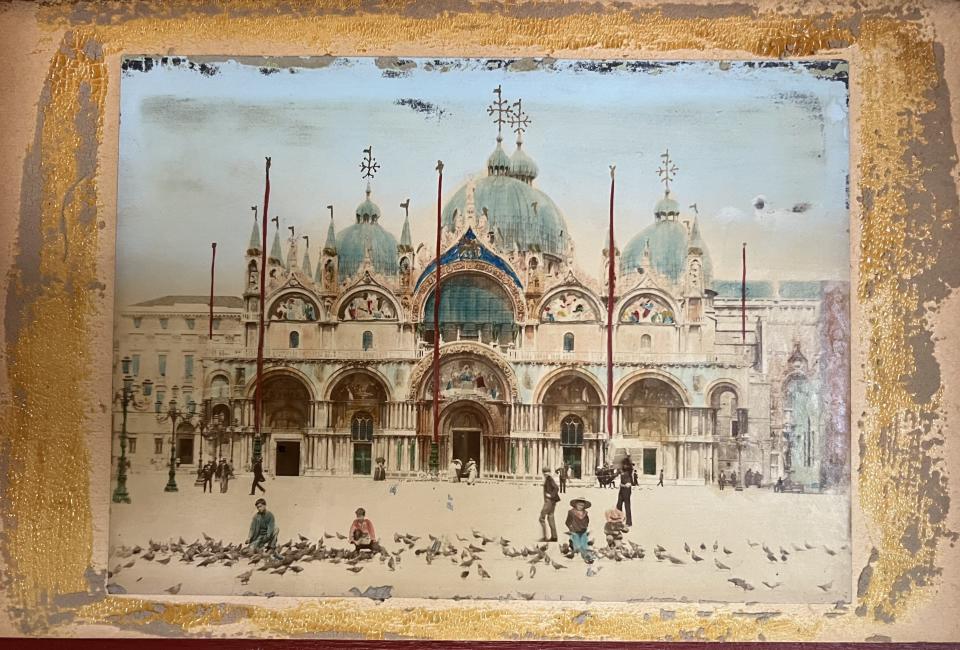John Sikorski: Writer needs readers’ help identifying tool

Q: Can you please identify this tool in the photo? It has no markings. It is very heavy duty and weighs 4 pounds 9 ounces. The outside spread is 9 inches across as pictured. It is highly adjustable and has a very heavy duty clamp. — B.S., Internet
A: I do not know what the item is. I think it was used by a farrier for Clydesdale and other draft horse breeds as a hoof template. That is my theory; readers, does anybody recognize it?

Q: Thank you for helping with the photograph of a print we sent you. My husband carefully opened the back by pulling little tiny nails that were all the way around the frame holding the backing. The paper was completely browned out and crumpled as he pulled out the little nails. There were no signatures on the front side and nothing on the back. He took better photos of the front and back anyway for you to look at. We look forward to what you can tell us. The picture has a reflective look when viewed from an angle. — H.K., Internet
A: It is not very often we get such a quick response. I am glad your husband removed the picture carefully. The reflective look you mention indicates you have a photograph that has been hand painted. During the end of the Victorian era, hand-painted photographs were very popular and are now quite collectible. I discovered that your picture is of St. Mark’s Basilica in Venice. It was likely produced before World War I. Potential dollar value is below $50.
Q: I have a large John Rogers group sculpture titled “Coming to the Parson." It measures 21 7/8 inches high by 17 3/8 wide and has a 10 3/8 inch diameter. On top of the base on the back is "Patented Aug 9, 1870." You can even read on the newspaper "The Union." It is all one color, a sort of buff. There is one chip on the edge of the base that shows a white color underneath the finish, but otherwise it is in good condition. Is there anything you can tell me about it? If it is worth a great deal, I would certainly sell it; otherwise I will leave it on the buffet where it sits. My husband and I both enjoy your informative column. Thank you. — T.G., Internet
A: John Rogers, 1829-1904, was an American sculptor whose specialty was group settings of Civil War subjects and ordinary life circumstances. He then had them reproduced in plaster and finished in a single buff or cream color. They were very popular decorations in American household parlors from the late 1850s into the 1890s. They have been a specific category of collecting since the 1980s but have gone down in value in the last 10 years. The one you have is not worth a great deal now. Better to keep it and pass it on in the family.
— John Sikorski, with more than 35 years of experience, is an Ocala-based antiques advisor, consultant and broker. Send your questions to Sikorski's Attic, c/o The Ocala Star-Banner, 2121 SW 19th Ave. Road, Ocala, FL 34471-7752, or email absantique@aol.com.
This article originally appeared on The Gainesville Sun: John Sikorski: Writer needs readers’ help identifying tool

